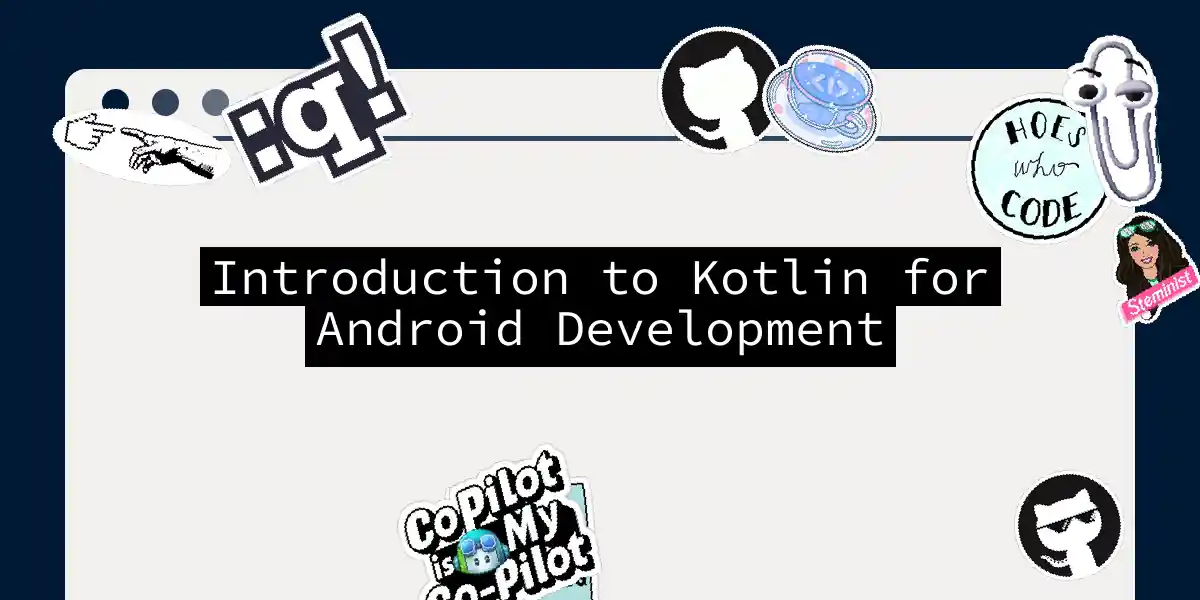Why Kotlin for Android?
In the ever-evolving world of mobile app development, choosing the right programming language can be as crucial as selecting the perfect ingredient for a recipe. Since Google I/O 2019, Kotlin has been the go-to language for Android development, and for good reason. Over 50% of professional Android developers now use Kotlin as their primary language, and it’s not hard to see why[1][2].
Conciseness and Readability
Kotlin is known for its concise syntax, which means you write less code but achieve more. Imagine writing a novel; you wouldn’t want to use ten words when one will do, right? Kotlin’s brevity makes your code more readable and maintainable. Here’s a simple example to illustrate this:
// Kotlin
fun greet(name: String) {
println("Hello, $name!")
}
// Java
public class Greeting {
public static void greet(String name) {
System.out.println("Hello, " + name + "!");
}
}
As you can see, Kotlin gets the job done with fewer lines of code.
Safety First
Kotlin is designed with safety in mind. One of its standout features is null safety, which helps you avoid those pesky NullPointerExceptions. In Kotlin, you have to explicitly declare a variable as nullable using the ? operator, which forces you to handle the possibility of null values at compile time rather than runtime.
var name: String = "John"
name = null // This will not compile
var nullableName: String? = "John"
nullableName = null // This is fine
This feature alone makes Kotlin apps 20% less likely to crash, according to Google’s internal data[1][2].
Jetpack Compose and Modern UI
Jetpack Compose is Android’s modern UI toolkit, and it’s built on Kotlin. This means you can create UI components quickly and efficiently using powerful and intuitive APIs. Here’s a snippet of how you might create a simple UI component with Jetpack Compose:
import androidx.compose.foundation.layout.Column
import androidx.compose.foundation.layout.padding
import androidx.compose.material.Button
import androidx.compose.material.Text
import androidx.compose.runtime.Composable
import androidx.compose.ui.Modifier
import androidx.compose.ui.unit.dp
@Composable
fun Greeting(name: String) {
Column(modifier = Modifier.padding(16.dp)) {
Text(text = "Hello, $name!")
Button(onClick = { /* Handle button click */ }) {
Text("Click me")
}
}
}
Structured Concurrency with Coroutines
Asynchronous programming can be a nightmare, but Kotlin coroutines make it a breeze. Coroutines allow you to write asynchronous code that looks and feels like synchronous code, making it easier to manage tasks like network calls and database updates.
import kotlinx.coroutines.*
fun main() = runBlocking {
val deferred = async { doSomeWork() }
val result = deferred.await()
println("Result: $result")
}
suspend fun doSomeWork(): String {
delay(1000) // Simulate some work
return "Work done"
}
Interoperability with Java
One of the best things about Kotlin is its seamless interoperability with Java. You can use Kotlin and Java together in the same project without any issues. This means you can gradually migrate your existing Java code to Kotlin, or use Kotlin for new features while keeping your existing Java codebase intact.
Learning Kotlin
If you’re already familiar with Java, learning Kotlin is a piece of cake. The syntax is similar, but with many improvements. Here’s a simple step-by-step guide to get you started:
Step 1: Set Up Your Environment
Ensure you have Android Studio installed, as it provides first-class support for Kotlin. You can even use the built-in tools to convert your Java code to Kotlin.
Step 2: Learn the Basics
Start with basic Kotlin concepts such as variables, functions, and classes. Here’s an example of a simple Kotlin function:
fun main() {
val name = "Maxim"
println("Hello, $name!")
}
Step 3: Dive into Jetpack Compose
Once you’re comfortable with the basics, dive into Jetpack Compose. Here’s a simple example to get you started:
import androidx.compose.foundation.layout.Column
import androidx.compose.foundation.layout.padding
import androidx.compose.material.Button
import androidx.compose.material.Text
import androidx.compose.runtime.Composable
import androidx.compose.ui.Modifier
import androidx.compose.ui.unit.dp
@Composable
fun MyFirstComposeApp() {
Column(modifier = Modifier.padding(16.dp)) {
Text(text = "Hello, World!")
Button(onClick = { /* Handle button click */ }) {
Text("Click me")
}
}
}
Step 4: Explore Coroutines
Understand how to use coroutines for asynchronous programming. Here’s an example of a coroutine in action:
import kotlinx.coroutines.*
fun main() = runBlocking {
val deferred = async { doSomeWork() }
val result = deferred.await()
println("Result: $result")
}
suspend fun doSomeWork(): String {
delay(1000) // Simulate some work
return "Work done"
}
Community and Resources
Kotlin has a vibrant and growing community. With over 95% of the top thousand Android apps using Kotlin, you’re in good company. There are numerous resources available, including official documentation, codelabs, and courses.
Here’s a flowchart to help you get started with Kotlin for Android development:
Real-World Examples
Companies like Zomato have seen significant benefits from using Kotlin. Zomato reduced the number of lines of code in their app and found important defects at compile time, thanks to Kotlin’s safety features[2].
Conclusion
Kotlin is more than just a programming language; it’s a tool that can significantly boost your productivity and the quality of your Android apps. With its concise syntax, null safety, and seamless integration with Jetpack Compose, Kotlin is the perfect choice for modern Android development.
So, what are you waiting for? Dive into the world of Kotlin and start building your next Android app today
